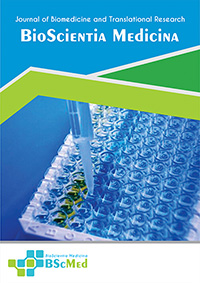Main Article Content
Abstract
Background: Bilateral pulmonary hydatid disease presents a complex therapeutic challenge, necessitating careful consideration of surgical timing, approach, and adjuvant medical therapy to optimize patient outcomes while minimizing morbidity. This systematic review and meta-analysis aimed to evaluate the different management strategies and their associated outcomes in patients with bilateral pulmonary hydatid cysts.
Methods: A systematic search of PubMed, Embase, Scopus, and Web of Science databases was conducted for studies published between January 2014 and December 2024, reporting on management strategies (one-stage bilateral surgery, two-stage bilateral surgery, medical therapy) and outcomes (postoperative complications, recurrence, mortality, length of hospital stay) in patients with bilateral pulmonary hydatid cysts. Studies were selected based on predefined inclusion and exclusion criteria. Data were extracted by two independent reviewers, and quality assessment was performed using a modified Newcastle-Ottawa Scale. Pooled proportions for outcomes were calculated using random-effects models. Heterogeneity was assessed using the I2 statistic.
Results: Seven studies, encompassing a total of 305 patients with bilateral pulmonary hydatid cysts, met the inclusion criteria. The studies varied in design, including retrospective cohorts and prospective case series. Management predominantly involved surgical intervention, with 148 patients (48.5%) undergoing one-stage bilateral surgery and 127 patients (41.6%) undergoing two-stage procedures. Perioperative albendazole was administered to 245 patients (80.3%). The pooled overall postoperative complication rate was 28.7% (95% CI: 21.5%-36.8%; I2=78%). Major complications occurred in 12.1% (95% CI: 8.0%-17.9%; I2=65%). The pooled recurrence rate at a mean follow-up of 38.5 months was 8.5% (95% CI: 5.1%-13.8%; I2=55%). Overall mortality was 2.1% (95% CI: 0.9%-4.5%; I2=0%). Patients undergoing one-stage surgery exhibited a trend towards higher overall complication rates (33.1% vs. 25.2% for two-stage) but shorter total hospital stays. Adjuvant albendazole therapy was associated with a trend towards lower recurrence rates.
Conclusion: Surgical management, whether one-stage or two-stage, remains the cornerstone of treatment for bilateral pulmonary hydatid disease, achieving acceptable morbidity and mortality with good long-term control in most patients. Postoperative complications are relatively common, highlighting the complexity of these cases. While one-stage surgery may shorten overall hospital stay, it might be associated with a higher risk of immediate complications. Adjuvant albendazole appears beneficial in reducing recurrence. The choice of surgical strategy should be individualized based on patient status, cyst characteristics, and surgical expertise. Further prospective, comparative studies are needed to delineate optimal management pathways.
Keywords
Article Details
As our aim is to disseminate original research article, hence the publishing right is a necessary one. The publishing right is needed in order to reach the agreement between the author and publisher. As the journal is fully open access, the authors will sign an exclusive license agreement.
The authors have the right to:
- Share their article in the same ways permitted to third parties under the relevant user license.
- Retain copyright, patent, trademark and other intellectual property rights including research data.
- Proper attribution and credit for the published work.
For the open access article, the publisher is granted to the following right.
- The non-exclusive right to publish the article and grant right to others.
- For the published article, the publisher applied for the Creative Commons Attribution-NonCommercial-ShareAlike 4.0 International License.





